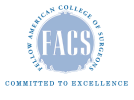Sperm Disorders & Evaluation
Learn About Semen and Sperm Disorders
Infertility is a growing issue for many couples. Infertility affects 6.1 million American couples (approximately 15% of American couples of childbearing age). The cost of infertility is 27.9 billion dollars per year in the US.
According to the American Urological Association’s best practice statement, Optimal Evaluation of the Infertile Male 1 (Jarow et al. 2011. AUA) “approximately 15% of couples are unable to conceive after one year of unprotected intercourse.” Male factor is solely responsible in about 20% of infertile couples and contributory in another 30-40%. If male infertility factor is present, it is almost always defined by the finding of an abnormal semen analysis, although other male factors may play a role even when the semen analysis is normal.
What is a normal sperm count and motility?
A comprehensive sperm analysisis always the first step when evaluating a male for potential infertility. For sperm to be considered fertile, the World Health Organization (WHO)2 requires:
- A concentration of 15 million sperm per ml.
- A motility of 40% or more
- A morphology (shape) by strict Kruger analysis to be 4% or greater.
Oligospermia and Azoospermia
Oligospermia is defined as low sperm concentration. Azoospermia is the condition where there is NO sperm and there can be two major causes either an obstructive or non-obstructive condition. Obstructive conditions are the inability to deliver sperm such as due to a vasectomy or patients born without a vas deferens. Non-obstructive conditions are when sperm production can be affected by hormones, testicular failure or cancer.
When sperm availability is low, the options can include:
- Assure that the patients is eating correctly, not smoking, not taking recreational drugs, taking exogenous testosterone and not taking hot tubs. Some patients will be offered nutritional supplements specific to sperm production and health.
- Assuring that the hormones are within their ideal range. Adjustments can be made through medications such as clomid.
- Providing intra-uterine insemination (IUI) treatments
- Providing pooled samples of sperm (adding several collections to form one good sample) in combination with IUI treatments.
- If extremely low, then IVF can be considered as a treatment option.
When sperm is being created but cannot get to the ejaculate (obstruction), then the options can include:
Vasectomy reversal to repair the vas deferens if a vasectomy was performed to create the obstruction.
If there is truly NO sperm, we can determine if you are still producing sperm that is not presenting itself in the ejaculate. If this is the case, a mapping procedure, known as testicular fine needle aspiration (TFNA)3 (Leung et al. 2014. Translational Andrology and Urology) can determine where exactly the sperm is being created. That can be followed 2 weeks later by a testicular sperm aspiration (TESA – needle aspiration of tissue)4 (Bastuba et al. 2019. Fertility and Sterility), a mini testicular sperm extraction (mini-TESE)5 (Pavlovich and Schlegel, 1997. Fertility and Sterility) or micro-testicular sperm extraction (micro-TESE requiring an OR setting) based on the amount of sperm being produced. Approximately 80% of patients who have no sperm in the ejaculate still have some sperm that can be withdrawn surgically as above; however, they will require IVF to create the embryo and baby.
There are times when the sperm analysis is may seem normal but the sperm has DNA issues. A DNA fragmentation test can test for the percentage of DNA that has been fractionated. If greater than 30%, it can translate to poor embryo fertilization and if embryos are formed, they many result in miscarriages. A new product called the Zymot Sperm Separator can assist in the correction this issue during sperm preparation. Dr. Bastuba has statistical proven this fact through an evaluation study in his andrology lab6 (Bastuba 2020. PCRS).
Finally, male infertility may occasionally be the presenting manifestation of an underlying life-threatening condition. Failure to identify diseases such as testicular cancer or pituitary tumors may have serious consequences, including, in rare cases, death.
The goals of the optimal evaluation of male infertility are to identify:
- potentially correctable conditions;
- irreversible conditions that are amenable to assisted reproductive techniques using the sperm of the male partner;
- irreversible conditions that are not amenable to the above, and for which donor insemination or adoption are possible options;
- life- or health-threatening conditions that may underlie the infertility and require medical attention; and
genetic abnormalities that may affect the health of offspring if assisted reproductive techniques are to be employed.
Dr. Martin Bastuba, Sperm & Semen Research Topics
Dr. Bastuba is conducting instrumental on-going research dedicated to continuously trying to improve pregnancies and live birth rates. Some of these research projects include:
- DNA Fragmentation Index (DFI): The lowering of DNA fragmentation identified in the head of sperm that can lead to an increase in miscarriages7 (Bastuba et al. 2019. AUA).
- Testicular Sperm Aspiration (TESA) Procedure Improvement: The ability to increase the volume and quality of sperm recovered from obstructive males for use in ART procedures. This abstract / paper will soon be published.
- Comparison of) Testicular Sperm Aspiration (TESA) to Testicular Sperm Extraction (TESE) sperm analysis. An abstract to soon be published establishing with confidence that both types of sperm retrieval yield adequate and viable sperm for ART procedure.
- Nutritional Supplements: Research comparing the semen analysis difference of a patient on specific nutritional supplements over a 3 month period.
- Post Vasectomy Sperm Freezing: A research project designed to determine how much time after receiving a vasectomy a patient can continue to donate viable sperm.
- Comparison of sperm wash techniques for IUI: A study on Pregnancy Rates Comparing Sperm Preparation via Sperm Wash Technique vs. Microfluidic Sperm Separation Device in Same Sex Patients
Learn More about Sperm Disorders, Semen Issues and Treatments
References
- Jarow J, Sigman M, Kolettis P, Lipschultz L, McClure D, Nangia A, Naughton C, Prins G, Sandlow J, Schlegel P. 2011. Optimal Evaluation of the Infertile Male. American Urological Association. fertstert.org/article/S0015-0282(02)03105-9/fulltext
- World Health Organization, Department of Reproductive Health and Research. 2010. WHO laboratory manual for the examination and processing of human semen. 5th Edition. who.int/publications/i/item/9789240030787
- Leung A, Mira J, Wayland Hsiao. 2014. Updates on sperm retrieval techniques. Translational Andrology and Urology. Volume 3(1):94-101. ncbi.nlm.nih.gov/pmc/articles/PMC4708305
- Bastuba M, Cohen M, Bastuba A, Biewenga E, Rocco N. 2019. Comparison of testicular sperm aspiration to testicular sperm extraction in men with obstructive azoospermia. Fertility and Sterility. Volume 11(4):e20. fertstert.org/article/S0015-0282(19)30177-3/fulltext
- Pavlovich C, Schlegel P. 1997. Fertility options after vasectomy: a cost effectiveness analysis. Fertility and Sterility. Volume 67(1):133-141. fertstert.org/article/S0015-0282(97)81870-5/fulltext
- Bastuba, M. (2020). Microfluidic Sperm Separation Device Dramatically Lowers DFI. Pacific Coast Reproductive Society, Indian Wells, CA. pcrsonline.org/2020-poster-abstract-presentations
- Bastuba M, Cohen M, Bastuba A, Rocco N. (November 2019) Initial Experience with Microfluidic Sperm Separation Device and DNA Fragmentation Index. American Urology Association Annual Meeting. Monterey, CA






